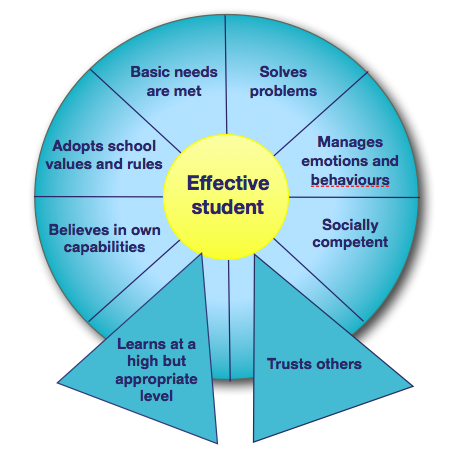
Use trust and learning to promote student wellbeing
January 20, 2013
Many teachers spend the first few weeks of the school year establishing social and behavioural expectations. School values, class rules and routines, personal and playground safety, bullying, protective behaviours and cyber-safety agreements coupled with various thinking tools are some of the key areas explored. It is a busy time of the year, as teachers begin to build relationships with students, while forming a picture about how best to work with them.
In late 2012, we began a series of blog discussions about the Psych4Schools Effective Student model. The first post looked at ensuringBasic needs are met and helping students to Solve problems. The second post focused on students being able to Manage emotions and behaviours and be Socially competent.
Effective teaching, learning and relationship building is optimised when students are healthy, feel safe, can regulate their feelings and emotions and are largely worry free.
This post focuses on helping students to Trust others and to Learn at a high but appropriate level.

The following suggestions aim to assist teachers to develop effective learners in these two key areas.
Trusts others
Students who trust other people such as their teacher (and parent/s, close relatives, family friends) are more likely to talk openly, and share their concerns and seek help in relation to unresolved issues or concerns.
- Reassure students that nothing is so bad it can’t be talked about. Encourage them to nominate five people they can openly talk to, including at least three trusted adults.
- Implement a kindness program where students initiate at least one act of kindness towards a person at school and home each day or week. This activity helps promotes ‘connectedness’ with others and pro social behaviour. For kindness activity ideas and free lesson plans click here. An act of kindness at home could be established from the beginning of the school year as a weekly ‘homework’ task.
- Involve students with other adults at school. Having students assist another staff member with tasks once or twice a week can help build rapport, responsibility and trust. Staff members could include the physical education teacher, art teacher, deputy or assistant principal or the school maintenance officer.
Learns at a high but appropriate level
- Set high but appropriate expectations and provide support and feedback. Timely completion of assessment and data analysis, including information from previous teachers, parents and other school professionals can facilitate the setting of high but appropriate expectations, along with student intervention and support where needed.
- Teach to strengths, interests and passions. To help engage and motivate students find out their interests and passions and tailor classroom work or discussion to these topics. Gather information during ‘getting to know you’ activities to help in selecting activities that complement each student’s strengths. For example a child with dyslexia who is good at public speaking could talk to the class about a topic rather than write an essay.
- Implement a differentiated curriculum. In any classroom, the spread of academic abilities can easily span four or more years. This spread requires a differentiated curriculum. Bloom’s taxonomy of learning can assist in classifying learning outcomes Members see the Psych4Schools Extension for gifted students package.
- For students with learning disorders or disabilities follow the recommendations made by psychologists and speech pathologists. Members can accessPsych4Schools resources. Non-members can visit the Free resources section for sample strategies to assist students with additional or special needs.
Murray Evely and Zoe Ganim, Psych4Schools Psychologists